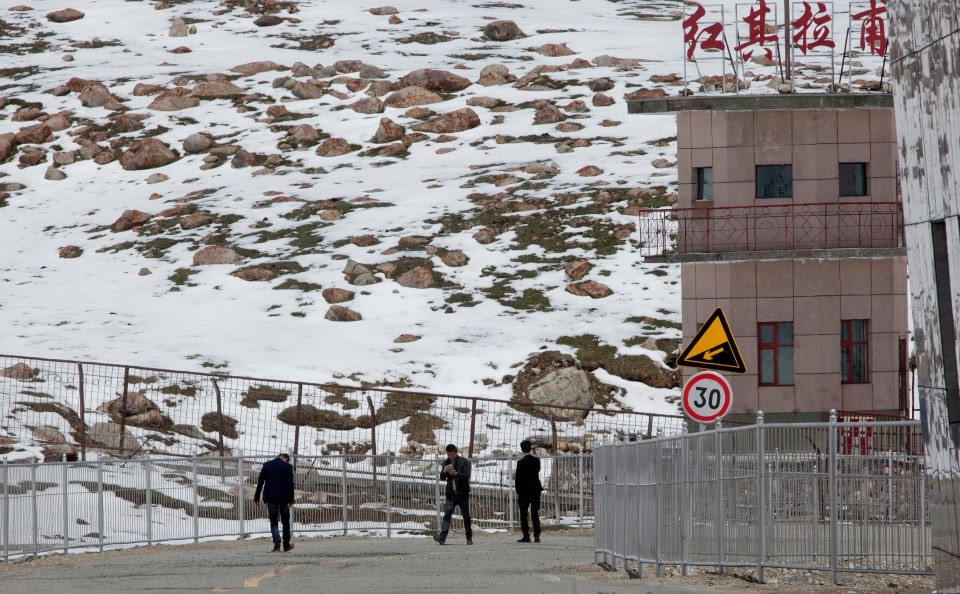Jonathan E. Hillman is a fellow at the Center for Strategic and International Studies, where he directs the Reconnecting Asia Project.
TASHKURGAN, China — An idea as big as China’s “Belt and Road” is bound to have contradictions. As Chinese President Xi Jinping’s signature foreign policy vision, it is massive in all dimensions, aiming to bind Beijing with the rest of the world through more than $1 trillion of new infrastructure, scores of trade agreements and countless other connections.
But there is a fundamental tension between the connectivity China says it seeks and the control it is unwilling to give up. Even as China claims to be championing globalization and broadening ties, it is clamping down in critical borderlands that Belt and Road routes would pass through, potentially crippling its own projects.
I noticed Beijing’s connectivity conundrum last year here in Tashkurgan, the last major town before China’s border with Pakistan and a stop along the ancient Silk Road. During a six-hour drive from Kashgar, another historic city in Xinjiang, the roads were impressive. Major bridges and a tunnel were under construction, all of which could help the China-Pakistan Economic Corridor, the $62 billion collection of energy, transportation and other infrastructure projects that is the Belt and Road’s flagship effort.
But a self-made challenge looms large.
Perched in the Pamir mountains, Tashkurgan is surrounded by natural beauty. Yet inside, it feels like a remote outpost preparing for a siege that will never come. Walls, gates and barbed wire surround hulking government buildings and a handful of hotels. Security guards sit inside buildings, half-heartedly patting down visitors after they pass through metal detectors. Shields, batons and other riot gear are stashed near entrances.
Within this security bubble, commerce appeared sluggish and mostly local. There was no sign of activity at the Khunjerab Port, which is named after the mountain pass that links China and Pakistan. To be sure, it is always risky to generalize from a single visit. In rural areas especially, economic activity can ebb and flow due to seasonal variations, holidays and other factors.
But one sector was thriving. The most impressive buildings were police stations. Stern and oversized, they looked like embassies on foreign soil. Building those structures surely boosted the region’s official GDP figures, which grew an impressive 7.6 percent in 2017. Time will tell how much real value they add. Police influence extended to the local gas station, where a long line of cars and trucks were waiting for approval to refuel.
This fundamental tension — between maintaining control and promoting connectivity — extends into the Belt and Road’s very core.
The initiative aims to fuel trade, but Beijing’s security measures constrain commerce. Intrusive security personnel and ubiquitous checkpoints make it difficult to send and receive packages. Local laws require citizens to participate in “anti-terror” drills, flag-raising ceremonies and other activities that distract from running a business. Last month, Xinjiang’s governor endorsed building a “Great Wall” to block foreign militants.
Beijing has promised the Belt and Road will increase international financial flows, but its capital controls stand in the way. Investments in Belt and Road-related projects have a better chance of receiving approval, but overall trends have been moving in the opposite direction. Last year, outbound investment fell almost 30 percent, as China moved to limit investments in real estate, sports and entertainment. While some restrictions on inbound investment have been relaxed, many barriers remain.
Hardest to reconcile may be the Belt and Road’s promise to speed the flow of information and ideas. As Xi said at the Belt and Road Forum in Beijing last year, “The ancient silk routes were not for trade only, they boosted flow of knowledge as well. … Today, a multi-dimensional infrastructure network is taking shape … featuring land-sea-air transportation routes and an information expressway.” But Chinese censorship and cyber security laws have become more intrusive. China is also offering to help other countries learn from its “Great Firewall” — in effect sharing knowledge to limit knowledge-sharing.
Of course, global flows create disruptions. Trade can increase productivity while displacing workers. Data flows can boost scientific innovation while fostering debates about other aspects of society.
There are also real security risks in some areas. Key projects stretch through Pakistan’s resistive Baluchistan province, where more than 50 workers and security personnel have been killed. Last year, two Chinese citizens were kidnapped and killed in the same region. To secure China-Pakistan Economic Corridor projects, Pakistan has deployed 15,000 troops.
But control doesn’t come without a cost. Global flows raise productivity, create more efficient markets and help countries benefit from the world’s best ideas, technologies and talent. Countries that overemphasize control do so at the expense of these benefits.
Whether you see great opportunities or great dangers in global flows depends, in part, on your capacity to adapt. Valuing their continued rule above all else, China’s leaders may have a high tolerance for forgoing connectivity gains in the name of stability. They are not alone. After Xi’s remarks at the Belt and Road Forum last year, Russian President Vladimir Putin took the stage. Turkish President Recep Tayyip Erdoğan followed.
Despite its contradictions, China’s Belt and Road remains the most ambitious economic vision on the global stage and its points of coherence, particularly exporting Chinese overcapacity to countries with considerable development needs, are powerful. But what China’s vision ultimately looks like on the ground will depend on its willingness to trade control for connectivity.
History provides a guide. The ancient Silk Road represented an improvement in connectivity, which is why that period is popularly remembered with images of movement: camels, caravans and merchants. If the new Silk Road is symbolized by images of stasis — police checkpoints, long lines of trucks and barbed wire — there won’t be much to remember.
This was produced by The WorldPost, a partnership of the Berggruen Institute and The Washington Post.





